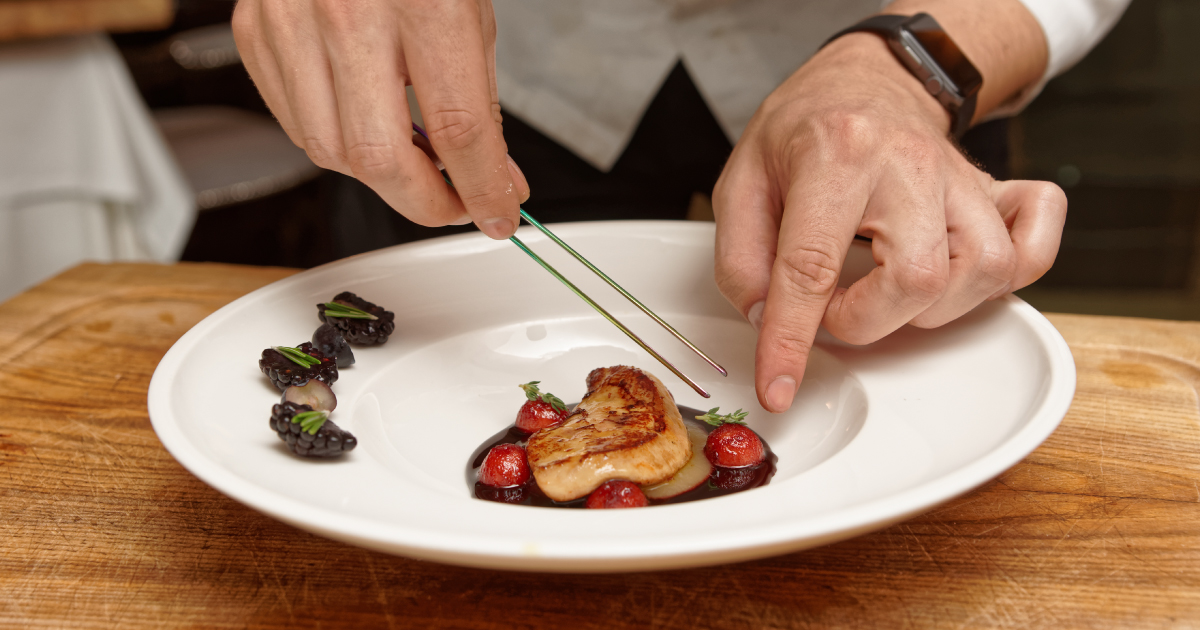
Tests Confirm: If You’re Eating This So-Called ‘Delicacy,’ You’re Eating a Diseased Liver
September 23, 2019 |
Organic Consumers Association
According to the company website, D’Artagnan’s foie gras “is considered a great delicacy around the world.”
But if you’re eating D’Artagnan’s foie gras, what you’re actually eating is the diseased liver of a tortured duck or goose.
Samples of D’Artagnan’s foie gras, submitted by Organic Consumers Association for independent lab testing, by the Cornell University Animal Health Diagnostic Center, confirm that the product is made from the livers of ducks that suffer from “severe hepatic lipidosis,” or what’s commonly known as fatty liver disease.
Setting aside the “yuck” factor for a minute, what do these test results mean?
They mean that the birds used to produce this “great delicacy” for consumers lived painful, tortured lives.
Pâté de foie gras is produced by force-feeding ducks and geese using long tubes that are shoved down the esophagus of the duck or goose. Here’s what that looks like from the bird’s perspective, says the Humane Society of the United States:
Force-feeding induces hepatic lipidosis and causes the birds’ livers to become diseased and enlarged. Substantial scientific evidence suggests that force-feeding can cause pain and injury from feeding tube insertion, fear and stress during capture and handling, gait abnormality due to distended livers, pathologies in liver function, and increased mortality.
HSUS reports that according to Yvan Beck, a veterinarian in Brussels, Belgium, at “the end of force-feeding, the liver is indeed a diseased organ. The bird is killed before collapsing on its own.”
Yet, somehow, these “diseased organs” are sold as a delicacy?
California Banned Foie Gras. Ask Your State to Do the Same
The U.S. Supreme Court recently declined to strike down California’s ban on foie gras, a so-called “luxury” food made from the enlarged livers of ducks and geese who have been fattened through force-feeding.
It’s time for other states to follow California’s lead and ban the inherently cruel practice of force-feeding birds!
Have you ever looked for certified “USDA Organic” foie gras?
You won’t find it because force-feeding an animal for the purpose of enlarging its liver beyond normal size would violate the organic regulations which state: “The producer of an organic livestock operation must establish and maintain year-round livestock living conditions which accommodate the health and natural behavior of animals.”
Likewise, searches for “certified humane” foie gras will produce nothing. There is no animal welfare standard that allows force-feeding.
Nevertheless, the myth of “humane” and “ethical” foie gras persists.
Yes, it’s possible for a duck or goose to enlarge its own liver by gorging itself, and there are hunters who say they have caught “wild foie gras.”
There’s also a farm in Spain that claims to attract 2,000 migratory geese who voluntarily stay at the farm while fattening themselves on the acorns, olives, figs, wild herbs, fruits and seeds that grow over the farm’s 1,200 acres.
But the miniscule amount of foie gras that comes from migratory geese isn’t the problem.
The problem is that there are U.S. farms and food brands, including D’Artagnan and its supplier, Hudson Valley Foie Gras, marketing foie gras from factory farms (the Environmental Protection Agency calls them concentrated animal feeding operations or CAFOs) where domesticated ducks spend their entire lives indoors. Using terms like “hand-fed” (a lie intended to hide the fact that workers use their hands to insert rigid metal feeding tubes called gavages down the duck’s throats) and “cage-free” (they may not be in individual cages, but 30 ducks are crowded into each small barren indoor pen), these charlatans have convinced consumers that there is something special about the way they force-feed their ducks.
Hudson Valley Foie Gras’ marketing videos, and video investigations from the animal welfare organizations Mercy For Animals and Compassion Over Killing, show the same process.
But there are two big differences between these videos.
First, Hudson Valley Foie Gras’ videos don’t show injured birds, while the Mercy for Animals videos include bloody and dead birds, and workers talking about the large numbers of birds who die during force-feeding. Even the Compassion Over Killing video, which was filmed during a company-led tour, showed bleeding and injured birds waiting to be slaughtered.
The second difference is in the narration and interpretation of the same scene. Hudson Valley Foie Gras claims that the birds aren’t afraid of, and don’t resist the gavage, while the Mercy for Animals and Compassion Over Killing narration points out ducks in their videos who crowd into the corner of the cage, flap their wings (the breed’s genetics prevent them from flying) and have to be grabbed by the wing or neck to bring them to the gavage. After being force-fed, the birds breathe heavily indicating that their lungs were compressed by the tube during the feeding process.
Between 2.5 – 4.2 percent of Hudson Valley Foie Gras ducks die before being slaughtered.
This inherently cruel practice of force-feeding birds should be outlawed in all 50 states! Please ask your state legislators to join California in banning foie gras!
To keep up with news and alerts from Organic Consumers Association, sign up for our newsletter.
